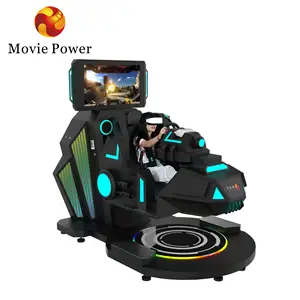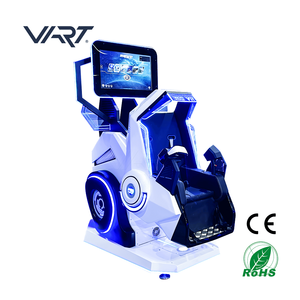Exploring the World of 360 Degree Motion Simulators
The realm of virtual reality and simulation has been revolutionized by the advent of 360 degree motion simulators. These immersive platforms are designed to replicate a three-dimensional environment, providing an unparalleled experience that mimics real-life motion and interaction. Utilized across various sectors, from entertainment to training modules, these simulators are pivotal in delivering an authentic virtual experience.
Types and Applications of Motion Simulators
There is a diverse array of 360 degree motion simulators available, each tailored to serve different applications. The commercial entertainment industry, indoor amusement parks, and public facilities often deploy these simulators to enhance user engagement. In educational and training environments, they serve as advanced tools for simulating real-world scenarios, allowing for safe and controlled learning experiences.
Design Features and Material Composition
The construction of a nova 360 degree motion virtual reality simulator typically involves robust materials such as steel, fiberglass, and various metals to ensure durability and stability. The design of these simulators is focused on replicating a full range of motion, offering users a seamless and responsive virtual reality experience. Attention to ergonomic design is also critical, ensuring comfort during use, regardless of the duration.
Advantages of 360 Degree Motion Simulators
One of the key advantages of using a 360 degree motion simulator is its ability to create a fully immersive environment. This is particularly beneficial in training scenarios where replicating real-life situations is crucial. In entertainment, the heightened realism contributes to a more engaging and memorable user experience.
Choosing the Right Simulator
Selecting the appropriate 360 degree motion simulator depends on the intended application and user requirements. Factors such as the number of seats, the range of motion, and the type of virtual reality content to be used are all important considerations. For instance, a nova 360 degree motion virtual reality simulator price may vary based on these features and specifications.
Conclusion
In conclusion, the 360 degree motion simulator category offers a versatile and dynamic range of products suitable for various applications. While the choice of simulator should be aligned with specific needs and objectives, the overall benefit lies in the immersive and realistic experience these devices provide. As the technology continues to evolve, so too will the capabilities and applications of these innovative simulation systems.










































 浙公网安备 33010002000092号
浙公网安备 33010002000092号 浙B2-20120091-4
浙B2-20120091-4